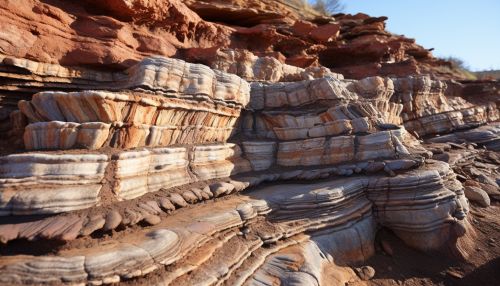Faunal Succession
Introduction
Faunal succession, also known as the law of faunal succession, is a fundamental concept in the field of paleontology. It refers to the observed regular and predictable pattern in which fossil species appear and disappear through the layers of rock in Earth's crust. This principle is a cornerstone of biostratigraphy, a sub-discipline of geology that uses fossil organisms to date and correlate rock strata.
Historical Background
The principle of faunal succession was first proposed by the English geologist William Smith in the early 19th century. Smith, often referred to as the "Father of English Geology", observed that rock layers (strata) contained specific assemblages of fossils, and that these assemblages succeeded one another vertically in a reliable, predictable manner. His observations laid the groundwork for the development of biostratigraphy and the use of index fossils for correlating strata.
Principles of Faunal Succession
The law of faunal succession is based on several key principles. These include the principles of superposition, original horizontality, and cross-cutting relationships. Together, these principles allow geologists to construct a relative geologic time scale.
Principle of Superposition
The principle of superposition states that in an undisturbed sequence of sedimentary rocks, the oldest rocks are at the bottom and the youngest are at the top. This principle is fundamental to the interpretation of Earth's history from rock strata.
Principle of Original Horizontality
The principle of original horizontality suggests that layers of sediment are originally deposited horizontally under the action of gravity. If these layers are found at an angle, then some event must have disturbed their original state.
Principle of Cross-Cutting Relationships
The principle of cross-cutting relationships states that any geological feature that cuts across, or disrupts, another feature must be younger than the feature that is disrupted.
Faunal Succession and Fossil Correlation
Faunal succession is used in the field of paleontology to correlate rock layers across large distances and to construct a relative geologic time scale. This is done by identifying and mapping the distribution of fossils known as index fossils.


Index Fossils
An index fossil is a fossil that is useful for dating and correlating the age of rock layers. To be considered an index fossil, a species must have been geographically widespread, abundant, and limited to a short span of geologic time. The presence of such a fossil in a rock layer assigns a relative age to that layer and allows for correlation with other layers containing the same fossil species.
Applications of Faunal Succession
The principle of faunal succession has wide-ranging applications in the fields of geology, paleontology, and even oil and gas exploration.
Geology and Paleontology
In geology and paleontology, faunal succession is used to date rock layers and to reconstruct the history of life on Earth. By studying the sequence and composition of fossil assemblages, scientists can piece together the sequence of events that have shaped our planet's history.
Oil and Gas Exploration
In the oil and gas industry, the principle of faunal succession is used to identify potential reservoirs of hydrocarbons. By identifying and correlating the age of rock layers, geologists can predict the location of oil and gas deposits.
Criticisms and Limitations
While the principle of faunal succession is widely accepted and applied, it is not without its limitations and criticisms. For example, the use of index fossils for dating and correlation assumes that the distribution of these fossils is not influenced by environmental factors. However, this is not always the case. Additionally, the principle of faunal succession is less applicable in environments where sedimentation is not continuous, such as in mountainous regions or areas of tectonic activity.
